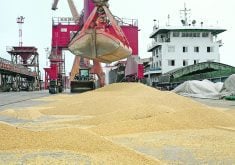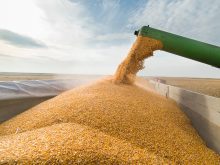Canola prices have been sagging as the vegetable oil market discovered a larger than expected U.S. soybean crop sitting in the bin.
Some market analysts say there is no quick fix to canola’s weakness.
“We have no legs of our own,” said Errol Anderson of the Pro Market Wire Report.
“The world has sidestepped Canada.”
On Jan. 10, the United States Department of Agriculture reported a 74.29 million tonne soybean crop was grown in 2002, up from its December estimate of 73.2 million tonnes. It also increased by one million tonnes its estimate of Argentine production.
Read Also

Defence investments could benefit agriculture
A bump in Canada’s NATO spending commitments could lead to infrastructure investments that would benefit rural areas
Soybean, soy oil and canola futures prices fell at North American exchanges.
The 2002 canola crop in Canada was small, but early price hikes have driven much demand from the market, analysts say. Commercial stocks held by crushers have been higher than expected, at about one million tonnes, compared to the normal 700,000 tonnes at this time of year, according to Statcom Ltd.
“It’s not nearly so tight as expected,” said Anderson, noting November harvesting yielded unexpected crop. Those extra supplies, while low quality, have left crushers in a much better position than they expected, he said.
Statcom said crushers and Mexican buyers are hanging back.
“Both of these buyers will be nervous about stepping in too soon and starting an upward rally,” said Statcom’s market update on Jan. 12.
Anderson expects canola and vegetable oil prices to be weak until mid-February. They might then increase as spring approaches. He thinks canola futures prices may fall to about $400 a tonne, and will have trouble getting back up to $450.
Statcom thinks world edible oil demand will slowly work down stock and pressure prices up.















